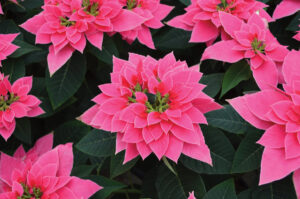As fall sweeps across Illinois, the landscape undergoes a breathtaking transformation. With hues of red, yellow, orange, bronze, brown and purple, the scenery becomes a vibrant and beautiful work of art.
Deciduous trees, those that lose their leaves every fall, create a stunning fall display as they prepare for winter temperatures. With daylight hours decreasing and the sun lower in the sky, the production of chlorophyll (green pigments) decreases in tree leaves, revealing other colorful pigments in a showcase of autumnal hues. However, large shade and ornamental trees are not the only ones on display this season. Many shrubs rival trees with their fall color.
Each year, the intensity of each specimen’s fall color varies based on the season’s weather, and the vibrancy of fall colors varies among trees and shrubs. Consider these standout selections if you are seeking a deciduous plant for your fall display.
Black gum
Also known as black tupelo, black gum leaves turn from a glossy green to a brilliant scarlet in the fall. The fall color is enhanced in full-sun locations. With unique, deeply ridged bark and horizontal branching habit, black gum makes a great medium-sized specimen that grows 30-50 feet tall.
Bald cypress
The bald cypress often tricks people into thinking it is an evergreen tree with its needled foliage. However, come fall, this pyramidal-shaped, deciduous conifer (cone-bearing plant) develops russet red foliage before dropping its leaves for the winter.
Ginkgo trees
These trees are unique and distinct specimens in a landscape. Its fan-shaped leaves densely covering the tree turn a vivid yellow color in the fall. All the leaves fall off the tree within a few days of the first hard frost as the leaf scars are all healed over for winter, creating a yellow blanket under the tree.
Oakleaf hydrangea
This shrub offers a stunning and dramatic display in the garden year-round; large oak-like leaves and panicle white blooms of summer transform into a rainbow of red, purple, yellow and orange leaves in fall alongside perfectly dried blooms which remain on the plant. Mature plants are 8 feet tall and exhibit reddish-brown exfoliating bark.
Chokeberry
The deciduous shrub offers multi-season interest and many new cultivars for small spaces. Small, black berries are produced in late summer and persist on the plant into fall among the bright red to dark purple foliage.
Virginia sweetspire
A great native alternative to the invasive burning bush, Virginia sweetspire is versatile, dependable and stunning in the fall with its red, orange and yellow colors. Its spreading habit and arching branches make it a great plant for mass plantings and borders.
As the days remain cool and plants prepare for winter dormancy, take a drive under the canopy of color — too soon it will be swept away with the arrival of winter’s chill.









